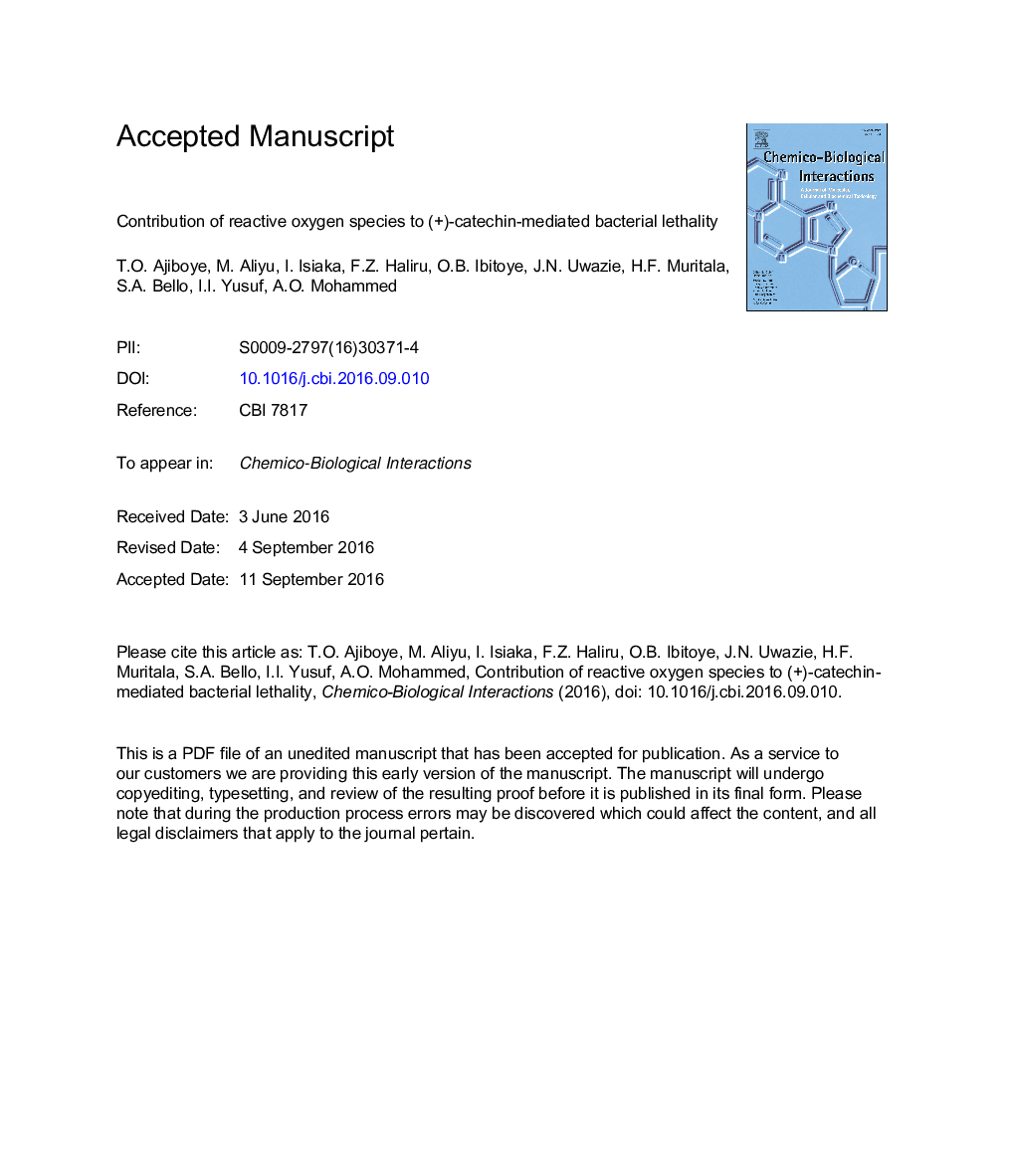| کد مقاله | کد نشریه | سال انتشار | مقاله انگلیسی | نسخه تمام متن |
|---|---|---|---|---|
| 8545671 | 1561583 | 2016 | 48 صفحه PDF | دانلود رایگان |
عنوان انگلیسی مقاله ISI
Contribution of reactive oxygen species to (+)-catechin-mediated bacterial lethality
ترجمه فارسی عنوان
مشارکت انواع اکسیژن واکنشنده به (+) - کاتاکین - کاهش می یابد مرگ و میر باکتری ها
دانلود مقاله + سفارش ترجمه
دانلود مقاله ISI انگلیسی
رایگان برای ایرانیان
کلمات کلیدی
موضوعات مرتبط
علوم زیستی و بیوفناوری
علوم محیط زیست
بهداشت، سم شناسی و جهش زایی
چکیده انگلیسی
The contribution of reactive oxygen species to (+)-catechin-mediated bacterial lethality was investigated. Minimum inhibitory concentrations (MIC) and minimum bactericidal concentration (MBC) of (+)-catechin against E. coli, P. aeruginosa and S. aureus were investigated using 96-well microtitre plate. MIC and MBC of (+)-catechin against E. coli, P. aeruginosa and S. aureus are 600 and 700; 600 and 800; 600 and 800 μg/mL respectively. The optical densities and colony forming units of (+)-catechin-treated bacteria decreased. (+)-Catechin (4à MIC) significantly increased the superoxide anion content of E. coli, P. aeruginosa and S. aureus compared to DMSO. Superoxide dismutase and catalase in (+)-catechin treated E. coli, P. aeruginosa and S. aureus increased significantly. Conversely, level of reduced glutathione in (+)-catechin-treated E. coli, P. aeruginosa and S. aureus decreased significantly while glutathione disulfide increased significantly. Furthermore, malondialdehyde and fragmented DNA increased significantly following exposure to (+)-catechin. From the above findings, (+)-catechin enhanced the generation of reactive oxygen species (superoxide anion radical and hydroxyl radical) in E. coli, P. aeruginosa and S. aureus, possibly by autoxidation, Fenton chemistry and inhibiting electron transport chain resulting into lipid peroxidation and DNA fragmentation and consequentially bacterial cell death.
ناشر
Database: Elsevier - ScienceDirect (ساینس دایرکت)
Journal: Chemico-Biological Interactions - Volume 258, 25 October 2016, Pages 276-287
Journal: Chemico-Biological Interactions - Volume 258, 25 October 2016, Pages 276-287
نویسندگان
T.O. Ajiboye, M. Aliyu, I. Isiaka, F.Z. Haliru, O.B. Ibitoye, J.N. Uwazie, H.F. Muritala, S.A. Bello, I.I. Yusuf, A.O. Mohammed,
